Glittering museums are a staple of stadium tours at trophy-laden clubs at the top of the football pyramid but a rarity lower down the leagues.
However, Charlton Athletic’s fan-run museum bucks the trend, celebrating the club’s past and contains artefacts spanning its entire history – from its formation as a youth team back in 1905 to the present day.
The museum is an invaluable resource and demonstrates the depth of history a club can have – even if it’s a club not decorated with an abundance of silverware.
With this in mind, London Football Scene paid a visit to the museum ahead of the recent draw at home to Wycombe Wanderers to find out more…
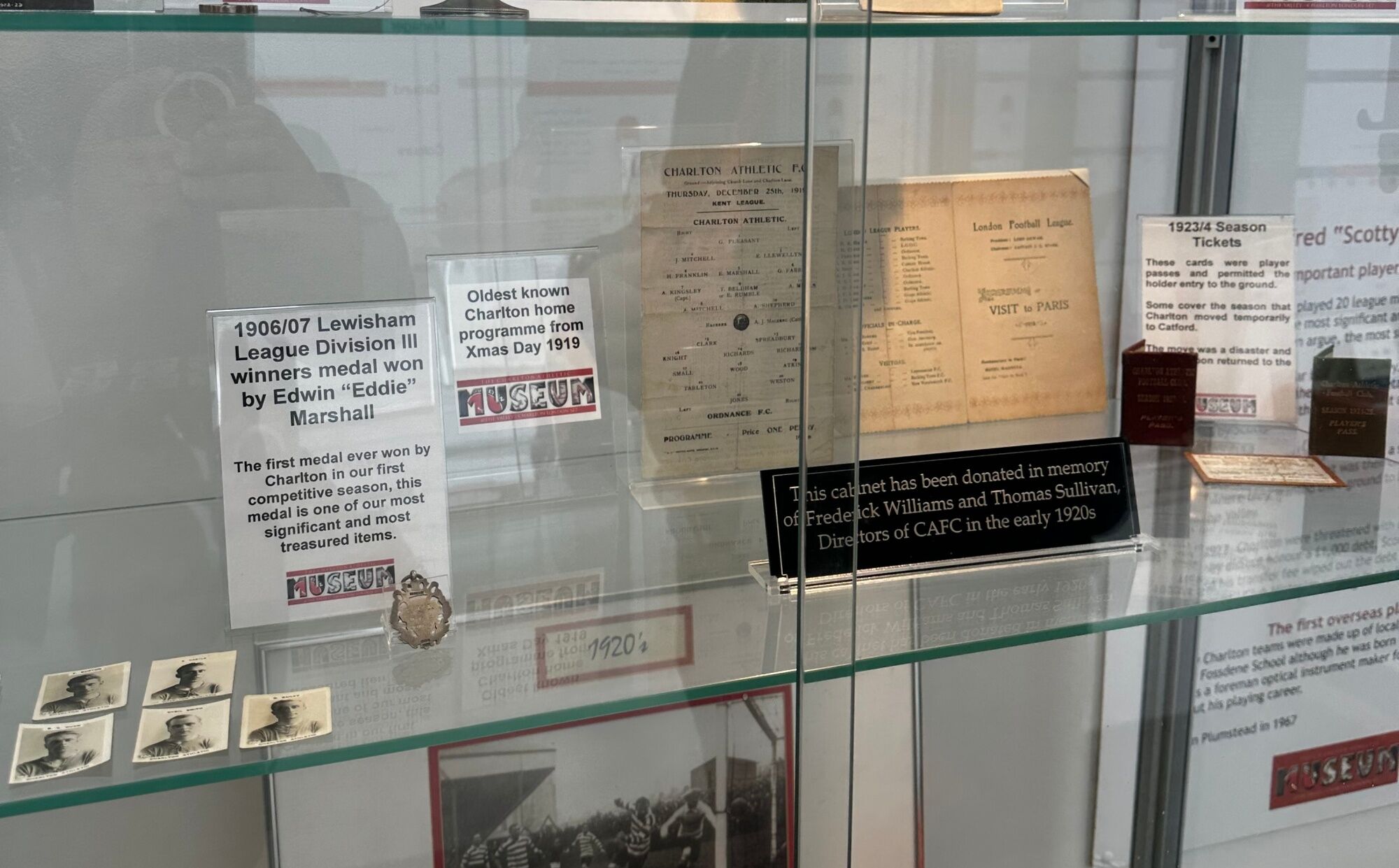
Formation and Zenith
Even at the club’s conception in June 1905, Charlton Athletic were unique – originally being formed as a youth team before rapidly rising through the local leagues to the Football League after World War I.
“In 16 years we went from Non-League to the Football League,” Ben Hayes, the museum’s curator, exclusively tells London Football Scene.
“We had a player called Eddie Marshall and have his winners medal from the 1906/07 Lewisham League Division Three campaign – the club’s very first full competitive season.
“Although he didn’t play, Marshall was still with Charlton 16 years later when they got to the Football League so it shows the continuity and connection they had as a local club.
“Following Jimmy Seed’s appointment as manager in the 1930s and squad investment from the owners, Charlton rose from the Old Division Three South to the top tier in just three seasons.
“They then finished runners-up to Manchester City in the 1936/37 campaign – we were that close to winning it!”
At the entrance to the museum are a number of pennants from prominent European clubs including Roma, Real Madrid and Galatasaray as Charlton were regularly invited to play against such illustrious opposition.
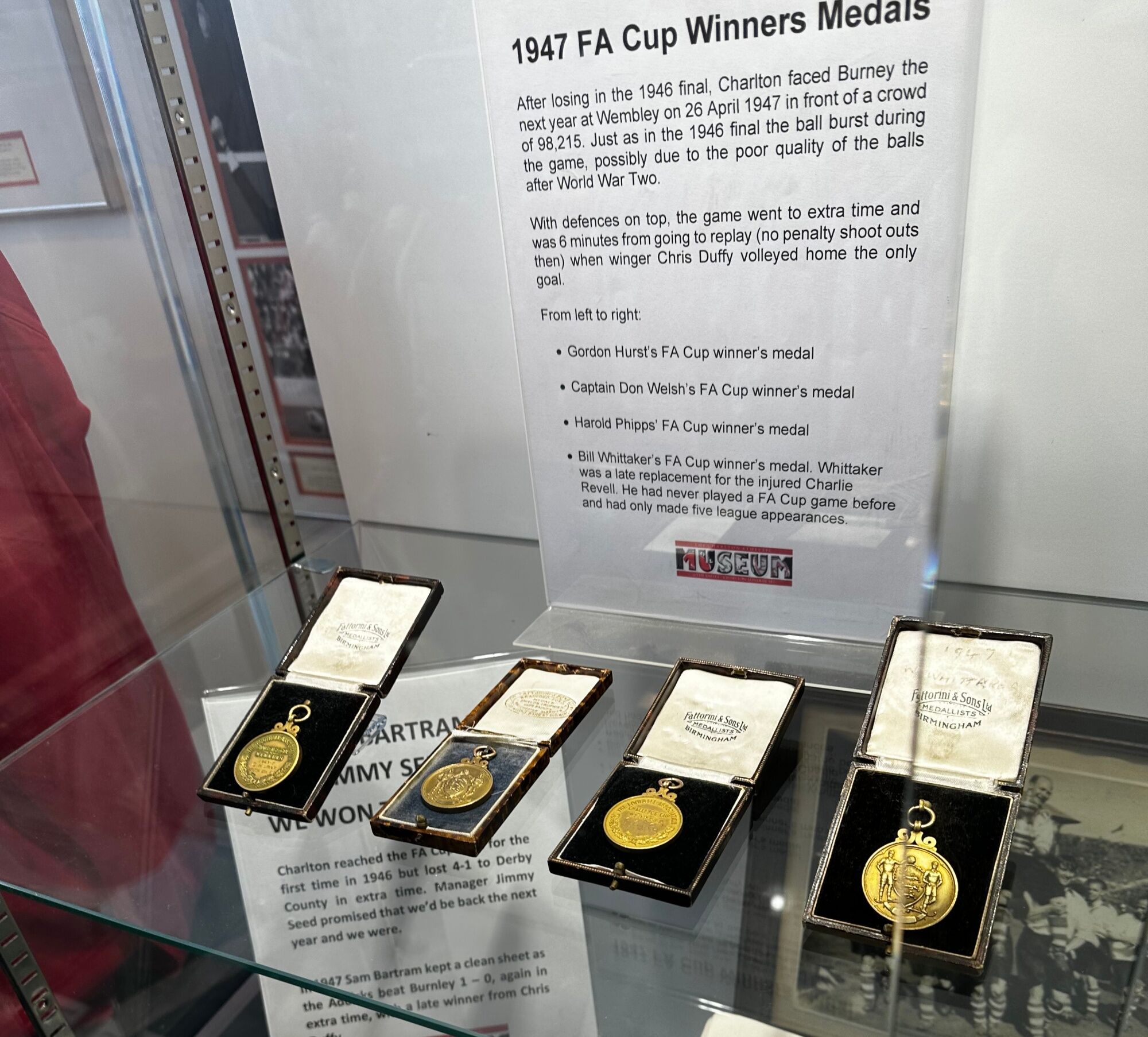
“In the 1930-1950s, Charlton and Arsenal were the two biggest clubs in England and we’d get huge crowds of 60,000 to 70,000,” Hayes added.
“Charlton were a big attraction and did lots of overseas tours and were paid to go and play against Roma. English football, then as it is now, was a big draw.
“There was also a lot of resentment towards Arsenal as they’d left south east London (Woolwich) to move to North London.
“The story goes, when Arsenal came back to play Charlton and the players ran out onto the pitch, the Charlton fans turned their backs – but then again if Arsenal hadn’t left the area, Charlton may never have turned professional.”
As a force in English football, Charlton went on to reach successive FA Cup Finals in 1946 and 1947, beating Burnley in the latter to become the first and only South London team to win the competition with the museum having four winners medals on show.
“There’s another runners-up medal from the 1946 final coming up for auction, belonging to Albert ‘Sailor’ Brown which we’re going to try and bid for.
“We really want to showcase it in our museum – if we don’t manage to get it, it’s likely to disappear into a private collection.
“This is why the museum is so important, as it provides a natural home for items like this, where they can be seen and enjoyed by everyone.”
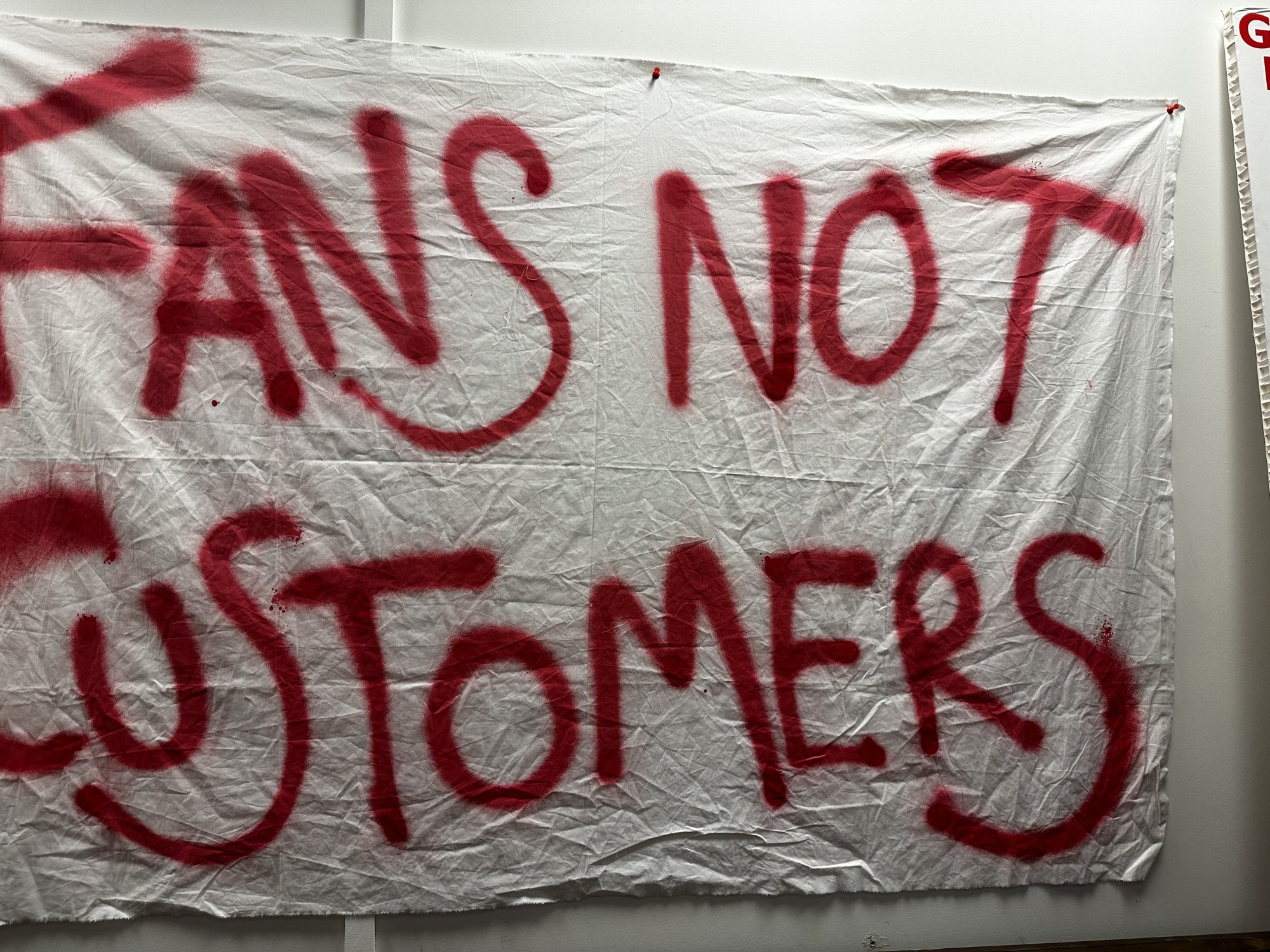
The Fans’ Room
This section is a tribute to the generations of Addicks fans who’ve supported the club from the stands and stood up for it when called upon.
The room contains fan memorabilia such as silk scarves, pennants and rattlers from a different era of football fandom.
However, the most striking are exhibits dedicated to the fan-led movements to bring the club back to The Valley as well as the recent protests against Roland Duchatelet’s ownership.
Early editions of ‘Voice of the Valley’, which helped instigate the movement to bring the club back to the ground are on show as well as paraphernalia related to the Valley Party.
One of the more humorous exhibits in the room is a giant mock Companies House notice celebrating the termination of Katrien Meire as a director of the club who had deemed Charlton fans as ‘customers’ under the Duchatelet regime.
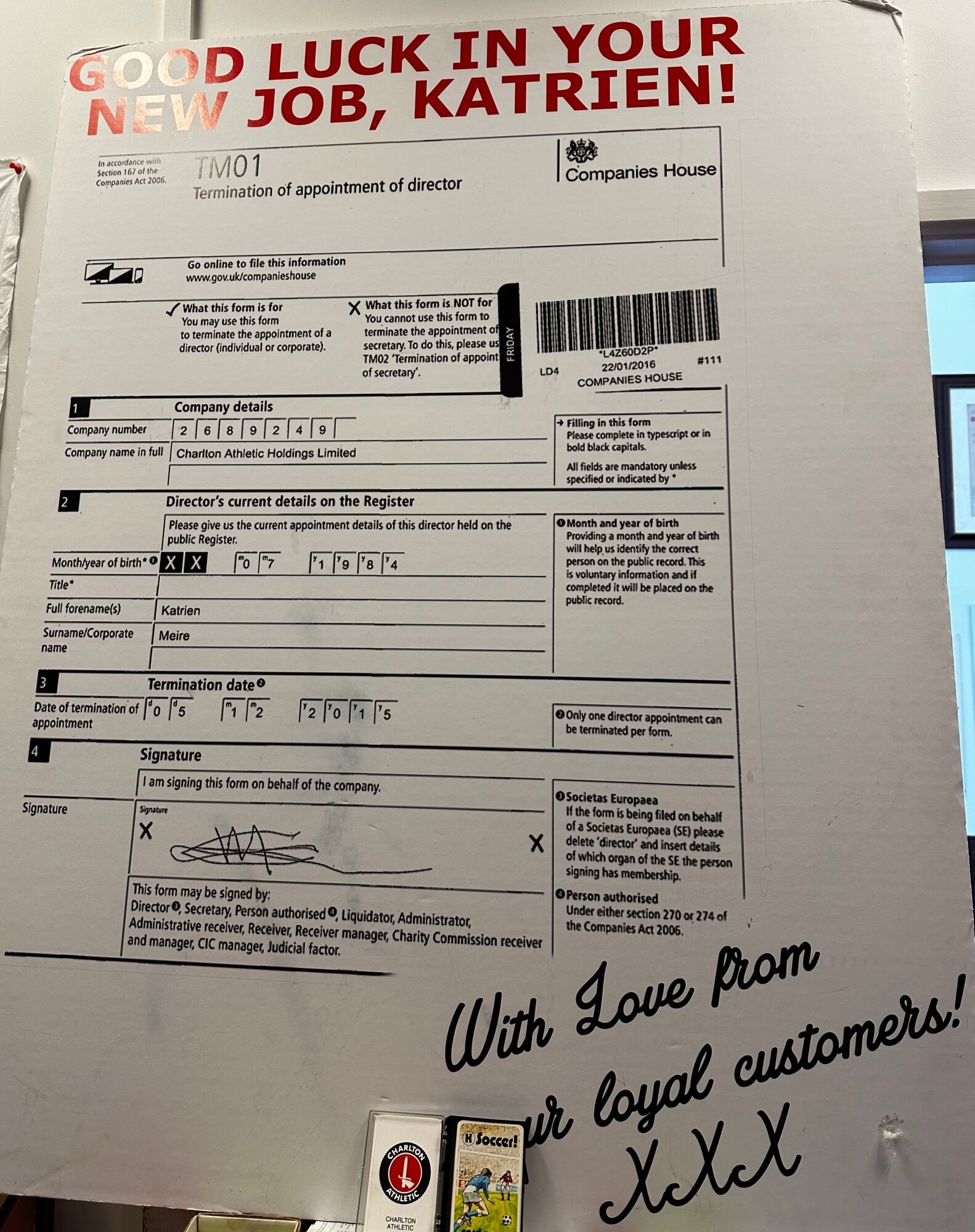
Recent Triumphs
On December 5th 1992, Charlton returned to The Valley after a seven year exile and the boot in which Colin Walsh scored the winning goal on that day is proudly displayed alongside the shirt he wore.
Younger fans will be drawn to the exhibit showcasing Charlton’s most recent high point -the 2019 Play-Off Final exhibit which shows Patrick Bauer’s shirt and boots alongside the Play-Off trophy.
“Patrick Bauer raffled off the shirt during the pandemic to raise money for the NHS and the person who won the shirt very kindly loaned it to us,” Hayes added.
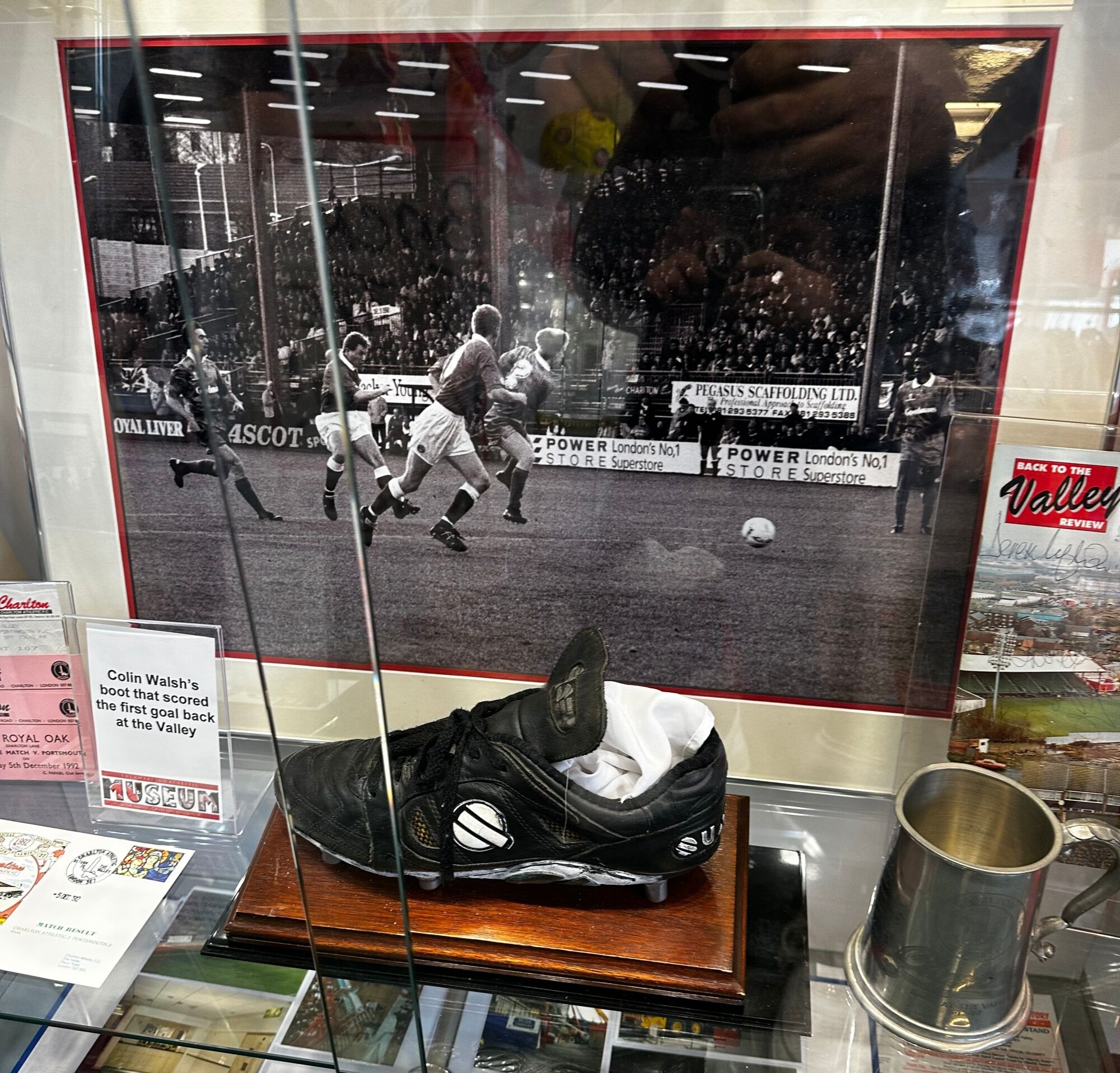
While the team may be stagnating on the pitch, a pre-match trip to the museum is inspiring with local rivals Millwall even visiting to gain advice in setting up their own similar initiative.
The museum is painstakingly maintained and curated throughout and provides a reminder of what has been done in the past, what is possible, but more importantly, a reminder that ultimately, faith is eventually rewarded.
The Charlton Athletic Museum is a volunteer initiative to preserve and display the heritage of the football club for the local community and supporters and is open every Friday 11am-3pm and every home matchdays 11am-1pm.
For more information, visit the Charlton Athletic Museum website.